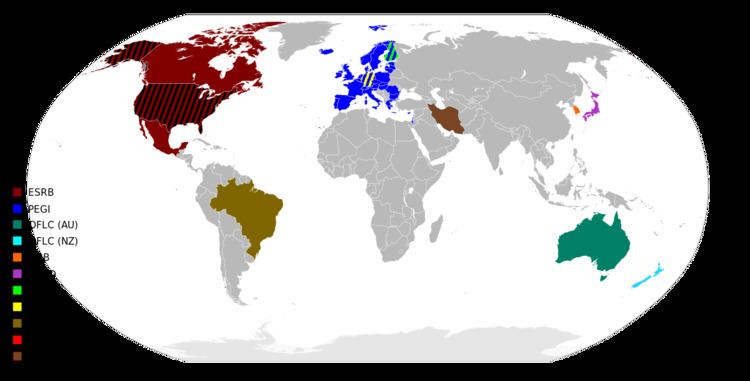Type Self-regulatory | ||
 | ||
Industry Organization and rating system Founded 2007 in Islamic Republic of Iran Key people Reza Ahmadi(President, CEO)Seyed Mohammad Ali Seyed Hosseini(Founder) | ||
The Entertainment Software Rating Association (ESRA) is a self-regulatory organization that assigns age and content ratings in Iran. The system was established in 2007 by the Iran National Foundation of Computer Games and has the status of a research project. ESRA principle, the result of a one-year investigation and research on different harmful content of computer games from three aspects of sociology, psychology, and Islamic teachings, launched its rating system in 2009 in five categories of 3+, 7+, 12+, 15+ and 18+ years of age. ESRA researching approaches based on Psychology or the cognitive behavior, Sociology, the science of community and human’s interaction and Religion.The contents are designed based on the culture, society and the special values of Iran. Macro, micro and analysis were two important bases in defining contents. After some level of changes in designing the contents, 187 contents in the form of 8 main criteria were extracted.
Contents
Goal
After the establishment of the National Institute of Games, creating the best model for optimal use of video games became the main goal of the ESRA. The ESRA aimed to take advantage of the power and effectiveness of educational games while avoiding potential mental distress and damages caused by their inappropriate use. The main reasons that the ESRA was established:
ESRA, Ratings and Symbols
The ESRA began rating video games in 2009, giving consideration to different aspects of the games such as psychology, sociology, and religion. The ESRA rating system was designed with the collaboration of over 20 experts and academic codifications to achieve the best accuracy possible in rating video games. The ESRA uses the following symbols to indicate video game suitability:
One of the most important reasons of the observed necessity for ESRA principle is the lack of a proper pattern of use for computer games and the negative physical and mental effects of computer games caused by misuse and the concern of parents regarding such issues due to their lack of information about the improper and inappropriate content of such games.
ESRA, Studies and Researches
In addition to controlling the content of video games, the ESRA has conducted research on the subject. Some of this research includes:
